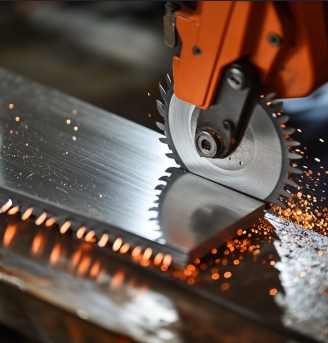Laser Cutting (Most Precise) – Ideal for complex designs; minimizes material waste and burrs.
Waterjet Cutting (No Heat Impact) – Preserves material properties; suitable for thick sheets.
Shearing (Cost-Efficient for Straight Cuts) – Fast and economical for simple shapes but may require edge finishing.
Plasma Cutting (Balanced Speed/Cost) – Best for medium-thick sheets; ensure post-cut deburring for smooth edges.
Pro Tip: Discuss thickness, tolerance, and edge requirements with your supplier to optimize cost and quality.

Cutting sheet metal stainless steel with a Jigsaw – Step-by-Step Guide
✔ Jigsaw (variable speed, 800-3,000 RPM recommended)
✔ Metal-cutting blade (bi-metal or carbide-tipped, 18-24 TPI)
✔ Cutting oil or lubricant (to reduce heat/friction)
✔ Clamps (to secure the sheet)
✔ Straight edge/ruler & marker (for precise lines)
✔ Safety gear (gloves, goggles, ear protection)
Mark the Cut Line
Use a marker and straight edge to draw a clear cutting line.
Secure the Stainless Sheet Metal
Clamp the stainless steel firmly to a stable workbench (use wood/cardboard underneath to prevent vibration marks).
Choose the Right Blade & Settings
Blade: Use a fine-tooth bi-metal or carbide blade (18-24 TPI for thin sheets).
Jigsaw Speed: Set to medium-low speed (1,200-1,500 RPM) to avoid overheating.
Apply Cutting Lubricant
Spray or brush cutting oil along the cutting path to prevent blade wear and overheating.
Start Cutting Slowly
Begin at a low speed, gradually increasing as needed.
Avoid forcing the blade—let it cut naturally to prevent bending or breaking.
Follow the Line & Control Movement
Keep the shoe (base) firmly against the sheet for stability.
Use gentle forward pressure and guide smoothly along the line.
Post-Cutting Finishing
Deburr edges with a file or sandpaper for a smooth finish.
Clean the sheet to remove oil residue.



